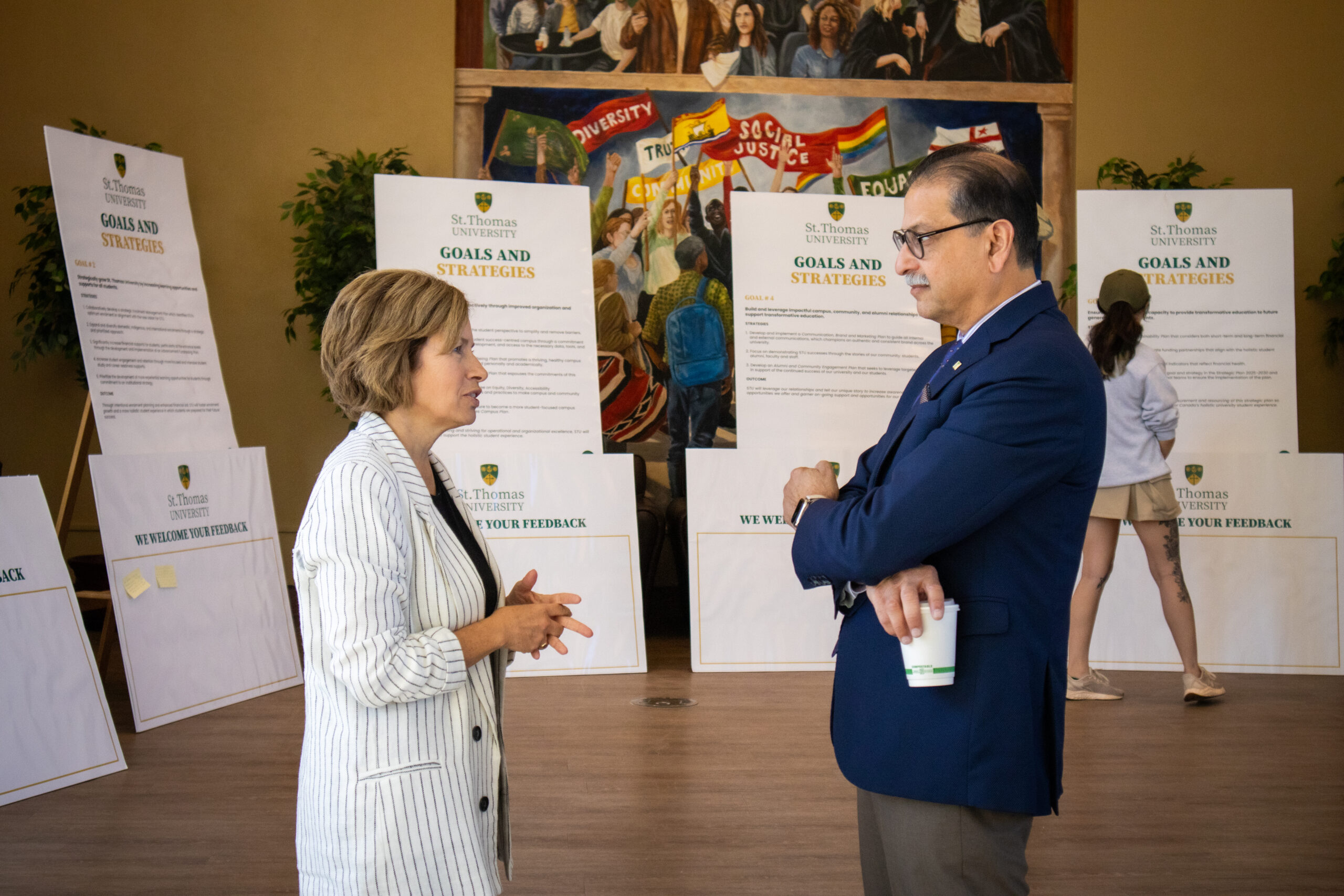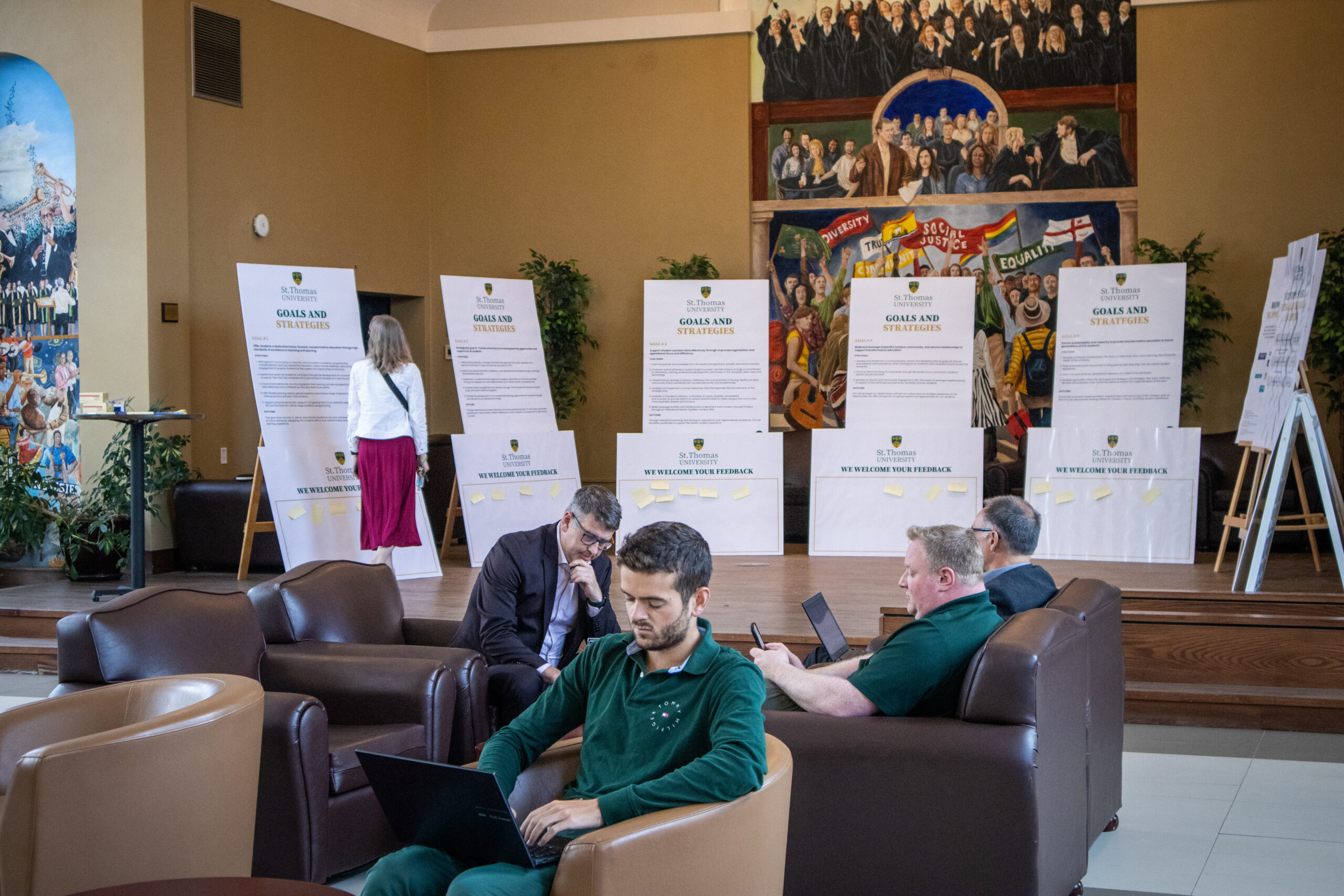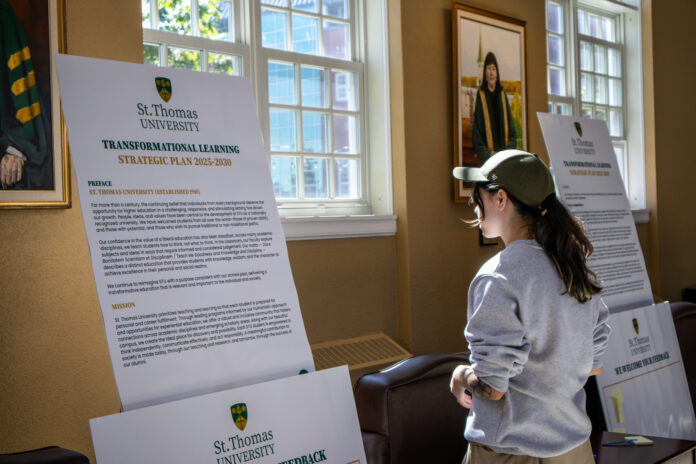St. Thomas University recently unveiled the framework for their new strategic plan for 2025-2030 which outlines future goals for the university and their commitments to students.
This announcement was followed by a public gallery walk on Sept. 10 that gave students the ability to provide feedback on the plans for the university. Students were also given the ability to submit their feedback via email.
STU spokesperson Jeffrey Carleton said that the university wanted to give staff, students and faculty time to understand and analyze the substance of the strategic plan before they received feedback.
“It’s now a matter of looking at the comments and seeing how we can integrate those into the draft plan,” said Carleton.
The new strategic plan was announced as part of a transitioning point between the second and third phase of the project that began its process under STU President Nauman Farooqi in January.
STU’s most recent strategic plan was created for 2013-2018 but extended into 2019, and was kept in effect until the new strategic plan is implemented.

Related: STU president Farooqi kicks-off first strategic plan process in 11 years
STU’s student union Vice President of Education Lucía Pavón has been following the strategic plan since the process began and was pleased with the announced framework.
“I think it was good planning. I’m glad that they’ve done the research, they’ve got their numbers and I think it was a good foundation,” said Pavón.
Matt Dinan is an associate professor and director of the great books program at STU who also graduated from the university in 2006. He is one of four faculty members that are a part of the working group that has helped formulate this strategic plan.
“We have something unbelievably valuable and special at St. Thomas,” said Dinan. “I really wanted to do everything I could to help it become better known and raise the quality of education we’re offering while keeping it accessible.”
Carleton said that there were consultants who have prior experience and expertise in creating and developing strategic plans for universities brought in to aid the university in this process to help ensure its quality.
Carleton outlines the importance of the new strategic plan as being something comparable to the center of the university’s ecosystem. He said it contains many other more focused plans that are already in development in anticipation of the implementation of this plan.
This includes an academic plan, retention plan, fundraising strategy, recruitment strategy, as well as more plans and strategies.
“All of those plans and approaches are things that serve St. Thomas, making sure we’re offering students a distinctive, high-quality education. It’s very important to the future of the university,” said Carleton.

The next step of the process is to take student feedback from both the gallery walk and emails. STU will use it to come up with the final draft of the strategic plan.
Despite the feedback email period being closed by the university, Pavón still encourages students to read the strategic plan framework and get involved in the process where they can.
“Even if it’s the smallest feedback possible, it would be great. As an international student I can only give so much feedback, it’s important to get all perspectives,” said Pavón.
This final draft will then be presented to the joint board committee on growth and future on Oct. 1 and then to the university’s board of governors on Oct. 19.
The board of governors’ final approval decision will come on Dec. 7.
“The main goal is to preserve the transformational liberal arts education that we have at St. Thomas,” said Dinan.
“We want to emphasize the strengths that St. Thomas has and build on it, while also increasing the accessibility and show Canada and the world that we have this truly unique institution.”

